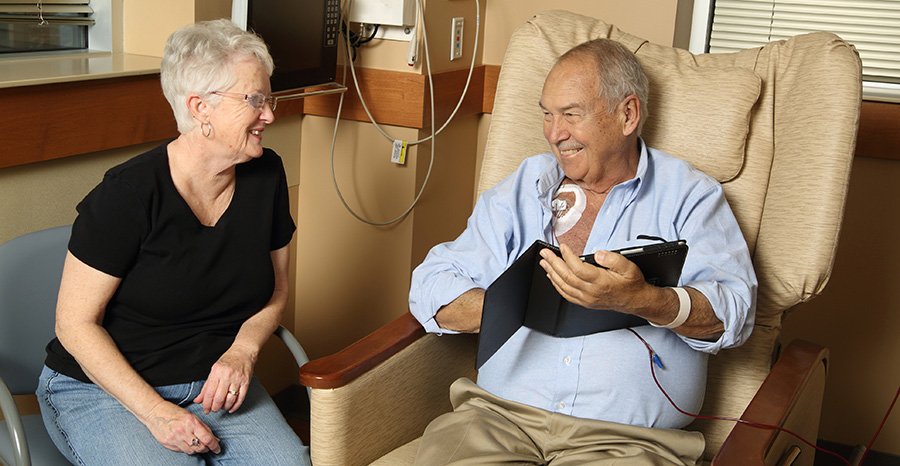By Richard Roth, Director of Business Development and Medical Marketing, Hitachi Cable America
Medical care has come a long way in the past 50 years. The transition from invasive surgery to minimally invasive same-day procedures has revolutionized the healthcare industry. Thanks to new procedures and diagnostic innovations, patients are living longer and receiving better care than ever before. Advancements in reusable and single-use disposable devices have played a significant role in minimizing procedural infections while enabling advanced medical technologies and the internet of things (IoT) to emerge.
New technologies such as thin-walled flexible catheter tubing, high-performance medical microcable, ultra-small cameras and LEDs have made it possible for some reusable technologies to also participate in the disposables market. A prime example of this is the modern endoscope, which has been a boon to medical science since its inception. In the U.S. alone, 75 million endoscopy procedures are performed each year.1 Minimally invasive procedures such as this tend to provide greater safety and efficacy. The devices are increasingly able to reach further into the human body to diagnose and treat areas that were previously only accessible through open surgery.
For both highly specialized catheters and endoscopes, it’s all about finding ways to improve procedural safety and mitigate medical risk. Reducing patient infection is of the utmost importance when designing devices that will ultimately be exposed to bodily fluids — whether short-term, as in the case of an endoscope, or longer-term, such as in indwelling PICCs (peripherally inserted central catheters) used for the delivery of intravenous fluids, blood transfusions, chemotherapy and other drugs.
No one wants an infection. Whether mild or life-threatening, infections are an undesirable aspect that every doctor and surgeon seeks to avoid. Reusable products require sterilization to maintain ongoing safety, whereas disposables do not. Disposables offer the benefit of reducing infection while potentially lowering the overall cost of ownership for the manufactured inventory.
Serious incidents of infection, despite sterilization protocols, have led to substantial lawsuits and damages to the original equipment manufacturers (OEMs) and users of the technology. This has helped to generate interest in disposable products for certain niche applications. Though reusable products will remain the predominant choice for many applications, there is a growing interest in disposables. For endoscopy in particular, reusable technologies will remain the protocol of choice, given the outstanding quality and capabilities of reusable devices. However, it will become increasingly common for OEMs to offer both reusable and disposable technologies as part of their portfolio. This can provide added value given the opportunity for dual functionality, such as a reusable device with small portions or tiny pieces that can be readily disposed of to minimize infection.

Compounding the problem of infection is the escalation of antibiotic-resistant bacteria — also known as superbugs — which have grown increasingly difficult to eradicate. And with tens of millions of patients each year undergoing catheter and endoscopic procedures, the risk of infection must be mitigated. According to a recent study done by the U.S. Centers for Disease Control and Prevention (CDC), 35,000 deaths are due to superbugs alone.2
Superbugs are not going away anytime soon. But single-use technologies can help the healthcare industry improve its chances for winning the battle. As OEMs increasingly turn to catheter makers and cable providers who can quickly and economically supply extremely small, intricate, highly flexible cable and tubing for these disposable devices, the tide against infections and superbugs might just be turning.
For catheters, mitigation of infection is being done at the material level through surface treatments, coatings or antibiotic/thrombotic-resistant additives. Preventing thrombosis is a critical precursor to preventing catheter-related infections, especially among PICC catheters. The longer a catheter resides in the body, the greater the risk for complications and infection, especially at the site of the insertion. Some of this same material treatment technology is applicable for endoscopic tubing, which benefits both reusable and single-use devices.

New technologies such as miniature complementary metal-oxide semiconductor (CMOS) cameras, microcatheter improvements and high-performance fine-grade medical cable have all made it possible for endoscopic devices to enter the single-use disposable arena, eliminating the need for subsequent sterilization.
These novel, miniature, flexible endoscopes are becoming surprisingly cost-competitive, with performance improvements rivaling those of some of the lower-end reusable devices. And thanks to this same technology, highly specialized hybrid catheter and endoscopic devices, which were once impractical to manufacture, are now well within reach. OEMs and medical facilities across the country can benefit from the value of single-use devices in improving patient safety and offering a broader range of products and services, all while reducing potential legal liability from risks related to insufficient or ineffective sterilization. Volume pricing also comes into play, contributing to lower device costs than previously possible. This directly translates to reduced healthcare costs for providers and patients alike. Other benefits include:
As a supplier of fine wire cable, catheter tubing, and medical device assemblies, Hitachi Cable America is proud to be a part of the changing landscape that is revolutionizing the way catheter and endoscopic devices are designed and manufactured.
Although still in the exploratory phase, IoT technology in healthcare may play its own transformative role in the future of single-use medical technologies. IoT refers to the billions of devices now connected to the internet, all collecting and sharing data. Hitachi is exploring how delivering data gathered by these single-use catheters and endoscopes can further improve patient and provider outcomes. For example, embedded device tracking features could trigger alerts to staff regarding improper device usage and help ensure that these single-use devices are not reused. IoT-connected medical facilities could also use device data as part of an end-to-end patient monitoring protocol.

By incorporating IoT capabilities into these devices, participating OEMs would be able to help protect their brand’s reputation, reduce the potential for litigation and improve patient care. They could also take advantage of more accurate product tracking, reporting and forecasting ― resulting in additional safety and financial benefits.
The ability to track and monitor every aspect of device usage at every stage of the product life cycle, from manufacture to distribution to end of life, has the potential to drive myriad improvements in patient care and medical logistics management. With IoT-connected devices, the possibilities for achieving transformative healthcare are endless.
A leading innovator in the healthcare space, Hitachi is helping to improve not only the quality of care that patients receive but also the ability for OEMs to deliver high-quality products to the medical facilities they supply. By combining our tubing business, our tooling and fabrication business, our fine wire cable import and assembly business, and other innovative technologies, we offer a unique differentiator to OEMs. Together, we can share a joint mission to create superior outcomes for patients and providers.
At Hitachi, we’re deeply committed to improving medical care globally, as part of our social innovation initiative to power good in the world. Along with OEMs, we’re placing ourselves at the forefront of delivering transformative technologies, such as single-use endoscopic and catheter devices, that will save lives while driving greater efficiency and lowering costs in the healthcare field.
For more information about how we can help you create better outcomes for your customers and their customers, contact us.

Director of Business Development and Medical Marketing, Hitachi Cable America
Richard Roth is the Director of Business Development and Marketing for the High Performance Medical Solutions Division of Hitachi Cable America, Inc. Richard is responsible for strategic growth and segment expansion strategies. He has a B.S. in Computer Science from Northern Illinois University and an engineering background with over 31 patents to date. He spent 25 years working with fiber optic connectors, medical devices, and other entrepreneurial products.